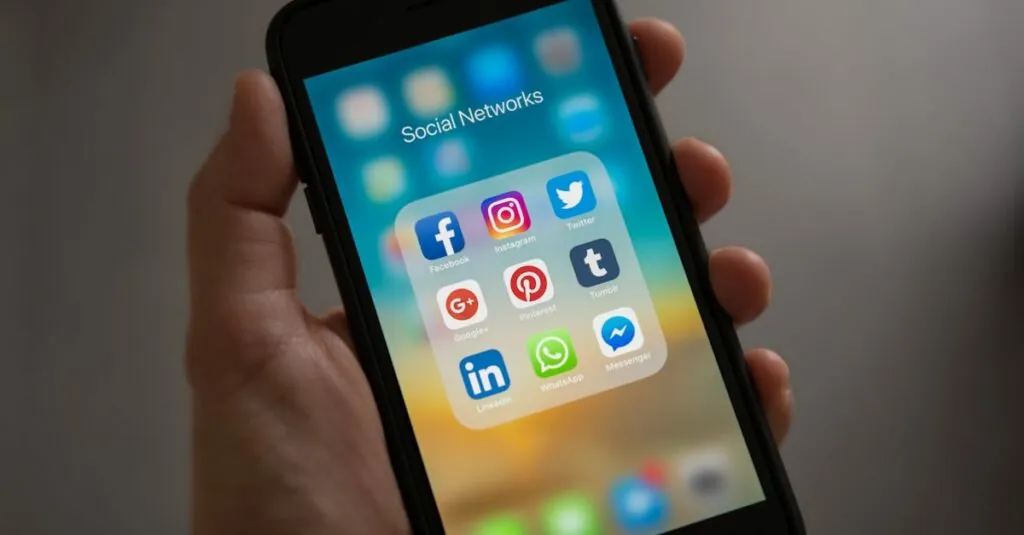Drones have taken the skies by storm, offering breathtaking views and a new way to capture nature’s beauty. But before you launch your flying gadget into the wild blue yonder of a national park, you might want to check the rules. Spoiler alert: it’s not as simple as a “let’s fly!” moment.
Imagine this: you’re soaring above the majestic landscapes, feeling like a modern-day eagle, only to be greeted by a park ranger who’s not quite impressed with your aerial escapades. National parks are sanctuaries for wildlife and serenity, and the last thing they need is a buzzing drone interrupting the peace. So, are drones allowed in these stunning natural playgrounds? Let’s dive into the dos and don’ts of drone flying in national parks and find out if your aerial dreams can take flight or if they’ll be grounded for good.
Table of Contents
ToggleOverview of Drone Regulations
Drones face strict regulations in national parks. The National Park Service prohibits recreational drone use across all parks. Flying drones can disrupt wildlife, disturb visitors, and degrade the natural soundscape. Different parks may have unique management policies that further restrict drone activity.
Permits for drone use might be available for specific professional purposes. Film crews and researchers often obtain these permits for projects requiring aerial footage. Each park establishes its guidelines for applying for a drone permit, which can include paperwork and compliance with safety protocols.
The Federal Aviation Administration (FAA) regulations apply to drone flying in national parks. Drones must adhere to altitude limits and not fly over people or moving vehicles. Owners must register their drones if they weigh over 0.55 pounds. Users can operate drones only in line of sight, ensuring control and safety at all times.
Consideration for visitors remains crucial. Drone noise can disrupt the experience of park-goers seeking tranquility. National parks serve as spaces for wildlife conservation and solitude. Park regulations emphasize preserving these qualities by limiting drone activities.
Rangers actively monitor park areas for unauthorized drone use. Violations may result in fines or other legal actions against drone operators. Understanding these regulations prevents negative interactions with park officials and ensures the protection of natural spaces.
Federal Laws Governing Drones
Drones face strict regulations under federal laws, particularly concerning national parks. Understanding these laws ensures responsible drone use and protects natural environments.
National Park Service Guidelines
National Park Service (NPS) regulations prohibit recreational drone flights in national parks. Disturbances to wildlife and visitor experiences drive these restrictions. Specific professional drone use may obtain permits through individual parks. Filmmakers, researchers, and conservationists often seek such permissions. Each park maintains unique permit processes and conditions, emphasizing the need for prior research before attempting drone use.
FAA Regulations
Federal Aviation Administration (FAA) regulations apply to all drone operators. Drones over 0.55 pounds must register with the FAA. Additionally, altitude limits restrict flights to no more than 400 feet above ground level. Operators can’t fly over people or moving vehicles without specific permissions. Maintaining visual line of sight with the drone remains crucial for safety. Violating these regulations can lead to fines or legal penalties.
Reasons Behind Drone Restrictions
Drone restrictions in national parks stem from several urgent concerns. Prioritizing the preservation of these natural areas mandates serious consideration of environmental impacts and wildlife protection.
Environmental Concerns
Pollution from drone use raises significant environmental issues. Noise generated by drones disrupts the peace of national parks, impacting the overall visitor experience. Additionally, drone emissions can contribute to air and noise pollution, negatively affecting the pristine landscapes. Habitat disruption occurs as well, with drones intruding into sensitive areas and potentially damaging fragile ecosystems. Significantly, the serene ambiance of national parks draws millions of visitors seeking refuge from urban life. Thus, preserving these environments requires stringent regulations regarding drone usage.
Wildlife Protection
Wildlife protection serves as a central component of drone restrictions. Disturbances caused by drones can lead to stress and displacement among animal populations. Natural behaviors, such as feeding and breeding, face interruptions when drones fly overhead. Nesting birds and other vulnerable species may abandon their habitats due to drone noise and presence. Moreover, human-wildlife interactions increase with unauthorized drone use, heightening risks to both wildlife and visitors. Therefore, safeguarding animals from these disturbances plays a crucial role in maintaining ecological balance within national parks.
Permits and Exceptions
Understanding the permits and exceptions related to drone use in national parks is crucial. Specific regulations apply depending on the purpose of the drone operation.
Special Use Permits
Special use permits allow certain individuals or groups to fly drones in national parks for specific projects. Examples include commercial photography, film production, and other events that require aerial footage. Each park has distinct guidelines for obtaining these permits, which typically require detailed application procedures. Interested parties must provide information about the intended use and potential impacts on the park environment. Park officials assess these applications to determine if they align with preservation goals. Securing a special use permit does not guarantee approval, as each request undergoes careful evaluation.
Research and Educational Use
Research and educational uses of drones can receive special consideration under certain circumstances. Universities and conservation groups often seek permission to use drones for monitoring wildlife, surveying ecosystems, or gathering data. These uses must directly support scientific or educational purposes and minimize impacts on the park’s natural resources. Typically, applicants should outline their research objectives and methodologies in their submissions. Organizations may also collaborate with park authorities to ensure compliance with environmental standards. Such initiatives contribute valuable insights while promoting responsible drone usage in protected areas.
Common Misconceptions
Misunderstandings often surround the use of drones in national parks. Many people think drones and model aircraft are treated the same in these environments. Drones differ significantly from traditional model aircraft due to their advanced technology and capabilities. While model aircraft typically require less regulation, drones face strict NPS restrictions to protect wildlife and visitor experiences. The advancing features of drones lead to heightened concerns regarding noise and environmental impact, warranting a more cautious approach.
Drones vs. Model Aircraft
Drones operate under a different regulatory framework than model aircraft, primarily due to Federal Aviation Administration (FAA) guidelines. Recreational drone use is heavily restricted within national parks, while model aircraft may have more leeway under specific conditions. National park policies prioritize wildlife protection, which has led to stricter rules for drone use. Several parks might allow model aircraft with fewer restrictions, but this isn’t universal. Understanding these distinctions is crucial for enthusiasts who wish to navigate these regulations.
Public Access and Regulations
Public access to national parks includes compliance with various regulations. Drones face bans to maintain the peaceful atmosphere parks aim to offer. Many visitors overlook the reason for these regulations, which focus on minimizing disruptions for wildlife and other guests. Specific exceptions exist for certain professional uses, often requiring special permits. The application process for these permits varies by park and often requires detailed project descriptions. Operators need to understand that violations can lead to significant penalties, reinforcing the need for awareness regarding park policies.
Drones offer a fascinating way to explore and capture the beauty of national parks but come with strict regulations that must be followed. Understanding these rules is essential for anyone considering drone use in these protected areas. By respecting the guidelines set by the National Park Service and the FAA, enthusiasts can help preserve the tranquility and ecological balance that make national parks special. Engaging with nature responsibly ensures that these stunning landscapes remain intact for future generations to enjoy.





